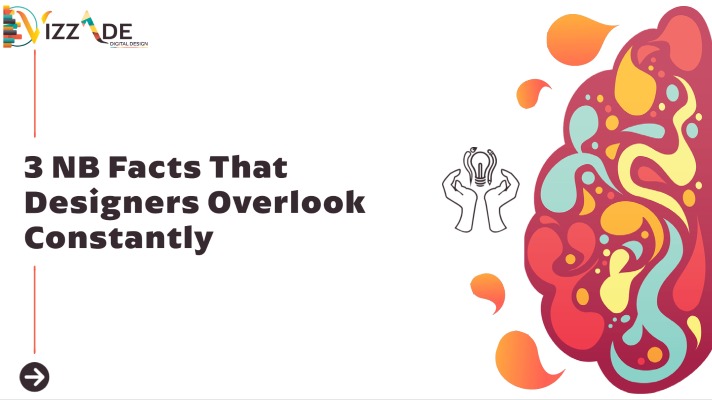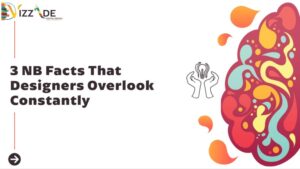In the last 2 years, things have been completely turned upside down. In between lockdowns, virtual working arrangements and the drop of the metaverse we are looking at a completely different dynamic when it comes to people interacting with one another and these 3 quality enhancing tips that most designers overlook will help ease a bit of stress in today’s competitive environment.
Being in the digital space, of course, we’ve been paying close attention to how our Creative and Logical communities have been doing. And we are happy to report that it has seen massive growth!
Not only in terms of the number of people that have started to take interest in the digital world, but more importantly, we’ve been seeing more and more designers fight for their creative freedom. We believe that design is all about capturing the essence of a brand and it’s the vision of the designer that makes it epic.
We’ve noticed something though.
To be a designer, to create a vision, to capture a brand we’ve picked up that designers are skipping out on a couple of really important steps in the design process – and it might not be what you think.
As the industry is now, it’s crucial to be at the top of your game when designing for clients. Those who are designing for the sake of just doing something are beginning to slow down, and those who design for the love of it are only rising.
We’re here to remind you of four, often overlooked aspects of design that could either skyrocket you or slow you down.
Find your inspiration first.
Here we go, let’s get into the things designers overlook.
Common things that we see in the industry when working with a lot of ‘designers’ is that more and more of the work that’s being put out is generic, overused and frankly a bit boring.
It’s easy to pick up when designers are passionate about their work, and it has a lot to do with the time and effort that they put into finding inspiration and expanding their source pool of creativity.
It’s essential to spend time looking for tiny bits and pieces that you as a designer relate to. This can range from the work of other designers, artworks from the Old Masters, nature, video games, anything honestly. Find elements and styles in everyday things around you that you can incorporate into your design work.
But it doesn’t have to stop there. Challenge yourself to find elements that you like and can draw inspiration from by searching for design styles that you normally wouldn’t even glance at. The truth is that good design carries a piece of its creators with them and there is always something new and interesting to find in places that you’ve never thought to look in.
We recommend taking an hour to two hours a day that you dedicate to sitting down and looking for inspiration.
Colours actually mean things.
“Colors, like features, follow the changes of the emotions”
Colour psychology is becoming a massive topic in modern-day design research and development. Designers are spending more and more time on understanding what makes people tick without knowing that they even have batteries in.
When it comes to using colours, it all has to do with the feelings that you want to create in the viewer when they’re looking at your designer. Warmer colours, for example, has a lot to do with feelings of comfort, power, and energy whereas cooler colours create a sense of calmness and life.
It’s not just about the good feelings though. Colours also can make your viewer feel other emotions as well. Warmer colour for instance can make the viewer feel hostile and unsettled. Cool colours on the other hand are more associated with sadness.
Using colour to create feelings of discomfort and sadness might not always be a bad thing. It all depends on the message that you want to get across to your viewer and the perspective that you are approaching them with. We prefer to say aesthetically impacting instead of aesthetically pleasing.
Factors like practicality and cultural meanings will also play a big role in the meanings behind colours. At the end of the day, if your designs are harsh on the eye, unreadable, or culturally conflicting with what you’re trying to get across you’re already starting on the back foot.
The most important thing of all – there has to be some form of coherence when it comes to colour usage in design. Try to stick with your foundational colours are far as possible. If you are using something different for a specific reason, like a campaign, for example, try to use different colours throughout the campaign.
The pen is mightier than the sword – or should we say, “the font”.
Colour, a prime example of things designers overlook, is not the only element that you can use to capture a certain feeling in the person who is looking at your designs. The fonts that you decide on play a major, and often overlooked role.
Besides instilling a feeling in your viewers, knowing a little bit more about font psychology can also go a long way when you are stuck on which fonts to use. Knowing what you want to get across makes the decision-making process a lot easier.
We all know that we, designers can do with a little bit of help in that department.
Needless to say, it’s super important to make sure that your font matches the brand and, by extension, the design feel of what you’re creating. When you’re creating a design for a business consulting firm, you are going to choose a style that is a bit more professional, clean and clear as opposed to using an artistic, movement-heavy and casual font for a hipster clothing brand.
As with colour psychology, it’s all about keeping the end feeling in mind when looking at different fonts. Ask yourself “If I came across this font, what would I feel from it?”
At the end of the day, knowing which is the more suitable fonts that you can use as another communication tool – or rather communication weapon – is something that you can keep in your back pocket and drive effective designs.
Know about the tools available to you.
There are a lot of resources out there, and we mean A LOT.
Design is a process, not an event and each step in that process requires different tools that will help you make the job a million times easier and a million times faster.
It’s super important for you to go out and find what works the best for you! That being said, a lot of new tools pop up everywhere and knowing about them can help you make better designs.
We get It, though! It can get incredibly overwhelming. That’s why we put together some great tools for you to check out:
For Inspiration
- Behance: If you want to find some new and exciting artwork, Behance is your place. SiteJabber review Behance a whopping 4.5 starts which means that people’s experience with it almost perfect! Not only is it a great place to FIND inspiration, but you can also inspire other with YOUR WORK. It’s a great place to share your work with your creative community.
- Savee: Is another great option when you’re looking to save and share great work! It allows you to save work from other platforms like Instagram. The best part? No ads and no tracking!
For Stock Images.
- Unsplash: Is an easy-to-use platform where you can look for and get free stock photography. Photographer often use it to get exposure and following of their work.
- Envato Elements: Offer great value for money. It’s one of the lesser expensive platforms where you can source a lot of differ design elements, templates, and inspiration from. Everything from stock images to presentation templated to product mockups. It also accommodates for a lot of differ design platform like Microsoft Word and the Adobe Suite.
For Colour Usage
- Coolors is a widely loved colour scheme generator. It gives you a lot of different varieties of colours that you can choose from to nail your brand feel on the head! It’s super user friendly and they have tried to keep pop-ups to a minimal, making it annoyance-free. Coolors is one of the highest-rated colour scheme generators out there.
- Adobe Color is a simple to use and easy to navigate tool that makes colour usage a breeze. If you’ve worked with Adobe before, you’ll find this tool to be super on intuitive and on-brand. It’s integration with the rest of the Adobe Suite is such a great feature and save a lot of time trying when it comes to creating cohesive colours in branding and design work.
For Fonts:
- Font Generator is one of the winners when looking for new and interesting font that you can download for free. It’s an easy to use, quick and simple font generator that will bring a bit of life to your designs in an instant.
- My Fonts is another great tool when it comes using fonts in your design work. It has a large database of fonts for you to use and it hand even help you identify fonts.
Conclusion
These are the things designers overlook, don’t be one of them.
As you can see, there is a lot more to design than meets the eye. We tend to focus a lot on what we think works. Although that plays a MASSIVE part in a successful design, it never hurts to expand on what that is, how are different ways for you to use it and what other people find interesting.
Doing your research is about growing as a designer, not changing. We live in challenging and – in our opinion – unfortunately, competitive times. It is our goal at VizzAde to help talented and passionate designers grow, rise above the noise, and keep true to themselves.
Just make sure that your clients approve though!





